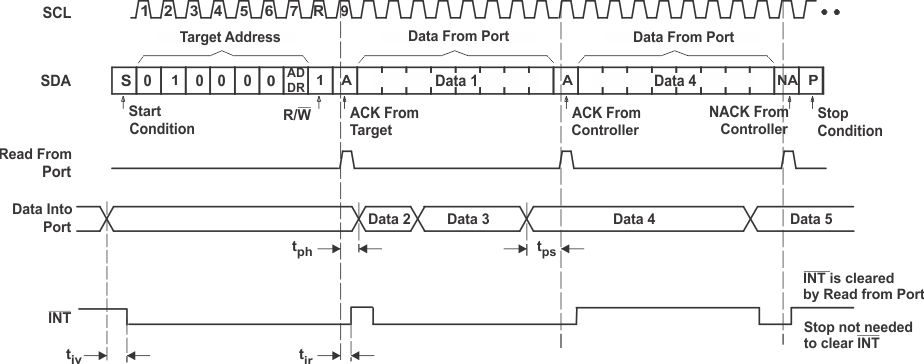SCPS277B November 2022 – November 2023 TCAL6408
PRODUCTION DATA
- 1
- 1 Features
- 2 Applications
- 3 Description
- 4 Pin Configuration and Functions
- 5 Specifications
- 6 Parameter Measurement Information
- 7 Detailed Description
- 8 Application and Implementation
- 9 Device and Documentation Support
- 10Revision History
- 11Mechanical, Packaging, and Orderable Information
Package Options
Mechanical Data (Package|Pins)
Thermal pad, mechanical data (Package|Pins)
Orderable Information
7.6.4.2 Reads
The bus controller first must send the TCAL6408 address with the LSB set to a logic 0 (see Figure 7-7 for device address). The command byte is sent after the address and determines which register is accessed.
Data is clocked into the register on the rising edge of the ACK clock pulse. There is no limitation on the number of data bytes received in one read transmission, but when the final byte is received, the bus controller must not acknowledge the data.
 Figure 7-11 Read From
Register
Figure 7-11 Read From
Register
A. Transfer of data can be stopped
at any time by a Stop condition. When this occurs, data present at the latest
acknowledge phase is valid (output mode). It is assumed that the command byte
previously has been set to 00 (read Input Port register).
B. This figure eliminates the
command byte transfer, a restart, and responder address call between the initial
responder address call and actual data transfer from P port (see Figure 7-11).
Figure 7-12 Read
Input Port Register